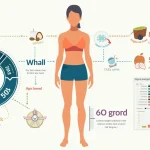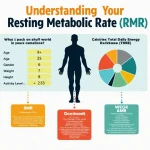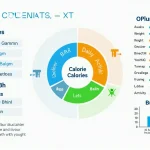Is this tool helpful?
How to Use the Body Surface Area (BSA) Calculator Effectively
Our Body Surface Area (BSA) Calculator is a user-friendly tool designed to help you quickly and accurately determine your body surface area. Follow these simple steps to use the calculator effectively:
Step 1: Enter Your Height
- Locate the “Height” input field.
- Enter your height value (e.g., 170).
- Select the appropriate unit from the dropdown menu:
- Centimeters (cm)
- Meters (m)
- Inches (in)
- Feet (ft)
Step 2: Enter Your Weight
- Find the “Weight” input field.
- Input your weight value (e.g., 70).
- Choose the correct unit from the dropdown menu:
- Kilograms (kg)
- Pounds (lb)
Step 3: Select BSA Formula (Optional)
- If desired, choose a specific BSA formula from the “BSA Formula” dropdown menu:
- Mosteller (default)
- DuBois and DuBois
- Haycock
- If you’re unsure, leave it as the default Mosteller formula.
Step 4: Calculate Your BSA
- Click the “Calculate BSA” button.
- Your Body Surface Area result will appear below the calculator.
- The result will show your BSA in square meters (m²) and indicate which formula was used for the calculation.
Understanding Body Surface Area: Definition, Purpose, and Benefits
Body Surface Area (BSA) is a calculated measure that represents the total surface area of the human body. It’s an essential metric in various medical and scientific applications, providing valuable insights into an individual’s physiological characteristics.
Definition of Body Surface Area
BSA is typically expressed in square meters (m²) and is derived from a person’s height and weight. It serves as an estimate of the total area of skin covering the body, which plays a crucial role in many bodily functions, including temperature regulation and fluid balance.
Purpose of Calculating BSA
The calculation of Body Surface Area serves several important purposes in medical practice and research:
- Drug Dosage Determination: BSA is often used to calculate appropriate medication dosages, especially for chemotherapy drugs and other treatments where precise dosing is critical.
- Cardiac Function Assessment: In cardiology, BSA is used to normalize cardiac output and other cardiovascular parameters, allowing for more accurate comparisons between individuals of different sizes.
- Burn Assessment: For patients with burns, BSA helps determine the extent of the affected area and guides treatment decisions.
- Metabolic Studies: Researchers use BSA in studies related to metabolism, as it correlates with basal metabolic rate and energy expenditure.
- Fluid Therapy: In some cases, BSA is used to calculate fluid requirements for patients undergoing certain medical procedures or treatments.
Benefits of Using a BSA Calculator
Utilizing a BSA calculator offers numerous advantages for both medical professionals and individuals interested in their health:
- Accuracy: BSA calculators provide precise results based on established formulas, reducing the risk of human error in manual calculations.
- Time-Saving: Quick and easy to use, BSA calculators streamline the process of determining body surface area, saving valuable time in clinical settings.
- Versatility: Our calculator supports multiple units of measurement and different BSA formulas, making it adaptable to various preferences and requirements.
- Accessibility: Available online, BSA calculators can be accessed anytime, anywhere, facilitating remote consultations and personal health monitoring.
- Educational Value: Using a BSA calculator can help individuals better understand their body measurements and how they relate to various health parameters.
The Science Behind BSA Calculation: Formulas and Their Applications
Several formulas have been developed to calculate Body Surface Area, each with its own strengths and applications. Our calculator offers three widely-used formulas:
1. Mosteller Formula
The Mosteller formula is the default option in our calculator due to its simplicity and broad applicability. It’s suitable for both adults and children and is widely used in clinical practice.
$$BSA (m²) = \sqrt{\frac{Height (cm) \times Weight (kg)}{3600}}$$2. DuBois and DuBois Formula
Developed in 1916, the DuBois and DuBois formula remains one of the most commonly used BSA calculations, particularly in research settings.
$$BSA (m²) = 0.007184 \times Height (cm)^{0.725} \times Weight (kg)^{0.425}$$3. Haycock Formula
The Haycock formula is known for its accuracy across a wide range of body sizes, making it particularly useful for pediatric applications.
$$BSA (m²) = 0.024265 \times Height (cm)^{0.3964} \times Weight (kg)^{0.5378}$$Practical Applications of BSA in Medical Settings
Understanding how BSA is applied in various medical contexts can help appreciate the importance of accurate calculation:
Chemotherapy Dosing
In cancer treatment, many chemotherapy drugs are dosed based on BSA to balance efficacy and toxicity. For example:
- A patient with a BSA of 1.8 m² might receive a dose of 90 mg/m² of a particular chemotherapy drug.
- Calculation: 1.8 m² × 90 mg/m² = 162 mg total dose
Cardiac Output Normalization
Cardiac output (CO) is often indexed to BSA to allow for comparison between individuals of different sizes:
- If a patient has a cardiac output of 5.4 L/min and a BSA of 1.7 m²
- Cardiac Index (CI) = CO / BSA = 5.4 L/min / 1.7 m² = 3.18 L/min/m²
Burn Area Assessment
In burn injuries, the percentage of Total Body Surface Area (TBSA) affected is crucial for treatment planning:
- If a patient has burns covering an area of 0.5 m² and their total BSA is 2.0 m²
- Percentage of TBSA burned = (0.5 m² / 2.0 m²) × 100 = 25%
Addressing User Needs: How Our BSA Calculator Solves Specific Problems
Our Body Surface Area Calculator is designed to address various user needs and solve specific problems encountered in both clinical and personal health contexts:
1. Simplifying Complex Calculations
Manual BSA calculations can be time-consuming and prone to errors, especially when using more complex formulas like DuBois and DuBois. Our calculator automates this process, ensuring accuracy and saving valuable time.
Example Calculation:
Let’s calculate BSA using the DuBois and DuBois formula for a person who is 175 cm tall and weighs 80 kg:
$$BSA = 0.007184 \times 175^{0.725} \times 80^{0.425}$$This calculation involves multiple steps:
- 175^0.725 ≈ 42.28
- 80^0.425 ≈ 6.43
- 0.007184 × 42.28 × 6.43 ≈ 1.95 m²
Our calculator performs these steps instantly, providing the result of 1.95 m² with just a few clicks.
2. Unit Conversion Challenges
Users often have height and weight measurements in different units. Our calculator eliminates the need for manual conversions by allowing input in various units and performing necessary conversions automatically.
Example:
A user has their height in feet and inches (5’9″) and weight in pounds (176 lbs). The calculator will:
- Convert 5’9″ to 175.26 cm
- Convert 176 lbs to 79.83 kg
- Use these converted values to calculate BSA
3. Comparing Different Formulas
By offering multiple BSA formulas, our calculator allows users to compare results and choose the most appropriate one for their specific needs.
Comparison Example:
For a person 180 cm tall and weighing 75 kg:
- Mosteller Formula: 1.94 m²
- DuBois and DuBois Formula: 1.94 m²
- Haycock Formula: 1.93 m²
This comparison shows that while the formulas generally yield similar results, slight variations can occur, which may be significant in certain medical applications.
4. Facilitating Remote Health Monitoring
In an era of telemedicine and remote health monitoring, our online BSA calculator enables patients to provide accurate BSA information to healthcare providers without in-person visits.
Scenario:
A patient undergoing chemotherapy needs to adjust their medication dosage. They can use the calculator at home and report their current BSA to their oncologist during a virtual consultation, allowing for precise dose adjustments without delay.
Practical Applications: Real-World Use Cases for BSA Calculation
To further illustrate the utility of our Body Surface Area Calculator, let’s explore some real-world scenarios where BSA calculations play a crucial role:
1. Pediatric Drug Dosing
In pediatric medicine, BSA is often preferred over weight alone for drug dosing, as it correlates better with physiological functions in children.
Case Study:
A 6-year-old child needs an antibiotic. The dosage is 250 mg/m² twice daily.
- Child’s height: 115 cm
- Child’s weight: 21 kg
- Calculated BSA (using Haycock formula): 0.82 m²
- Dosage calculation: 250 mg/m² × 0.82 m² = 205 mg twice daily
2. Assessing Cardiovascular Health
BSA is used to index various cardiovascular parameters, allowing for more accurate interpretation of heart function across different body sizes.
Scenario:
A cardiologist is evaluating two patients with different body sizes but similar absolute left ventricular mass (LVM):
- Patient A: BSA = 1.8 m², LVM = 180 g
- Patient B: BSA = 2.1 m², LVM = 180 g
Calculating LVM index (LVMI = LVM / BSA):
- Patient A: LVMI = 180 g / 1.8 m² = 100 g/m²
- Patient B: LVMI = 180 g / 2.1 m² = 85.7 g/m²
This indexed value provides a more accurate comparison, showing that Patient A has a relatively larger heart for their body size.
3. Fluid Resuscitation in Burn Patients
BSA is crucial in determining fluid requirements for burn patients, especially in the critical first 24 hours post-injury.
Example:
A patient with 40% TBSA burns requires fluid resuscitation using the Parkland Formula:
- Patient’s weight: 70 kg
- BSA: 1.8 m²
- Parkland Formula: 4 mL × weight (kg) × % TBSA burned
- Calculation: 4 mL × 70 kg × 40% = 11,200 mL needed in the first 24 hours
4. Adjusting Exercise Intensity
In sports medicine and fitness, BSA can be used to adjust exercise intensity and compare performance metrics across athletes of different sizes.
Scenario:
Two runners are comparing their VO2 max (maximum oxygen uptake) results:
- Runner A: VO2 max = 4 L/min, BSA = 1.9 m²
- Runner B: VO2 max = 3.8 L/min, BSA = 1.7 m²
Indexing VO2 max to BSA:
- Runner A: 4 L/min / 1.9 m² = 2.11 L/min/m²
- Runner B: 3.8 L/min / 1.7 m² = 2.24 L/min/m²
This indexed comparison shows that Runner B actually has a higher oxygen uptake capacity relative to their body size.
Frequently Asked Questions (FAQ)
Q1: Why is Body Surface Area important?
A1: Body Surface Area is crucial in medical settings for various reasons:
- It helps determine appropriate drug dosages, especially for medications with narrow therapeutic windows like chemotherapy drugs.
- BSA is used to normalize physiological parameters such as cardiac output, allowing for more accurate comparisons between individuals of different sizes.
- In burn treatment, BSA helps assess the extent of burns and guide fluid resuscitation.
- BSA is used in research to standardize metabolic measurements across different body sizes.
Q2: Which BSA formula should I use?
A2: The choice of BSA formula depends on the specific application and population:
- The Mosteller formula is widely used due to its simplicity and applicability to both adults and children.
- The DuBois and DuBois formula is commonly used in research settings and has a long history of use in clinical practice.
- The Haycock formula is particularly useful for pediatric applications and is known for its accuracy across a wide range of body sizes.
In most general applications, the Mosteller formula is a good default choice. However, for specific medical or research purposes, it’s best to consult with a healthcare professional or refer to relevant guidelines.
Q3: How often should I recalculate my BSA?
A3: The frequency of BSA recalculation depends on the context:
- For adults with stable weight, annual recalculation is usually sufficient.
- For growing children or adolescents, more frequent calculations (every few months) may be necessary.
- In medical settings, BSA should be recalculated whenever there are significant changes in weight or height, such as during pregnancy or after substantial weight loss or gain.
- For patients undergoing treatments where precise dosing is critical (e.g., chemotherapy), BSA may be recalculated before each treatment cycle.
Q4: Can BSA be used to determine ideal weight?
A4: While BSA is related to body size, it’s not typically used to determine ideal weight. Other metrics such as Body Mass Index (BMI) or body composition analysis are more commonly used for assessing healthy weight ranges. BSA is primarily used for medical calculations rather than as a weight management tool.
Q5: How does BSA relate to metabolism?
A5: BSA correlates with basal metabolic rate (BMR) and is sometimes used in metabolic studies. Generally:
- A larger BSA is associated with a higher BMR, as there’s more surface area for heat loss and more tissue requiring energy.
- However, BSA alone doesn’t account for all factors affecting metabolism, such as muscle mass, age, and hormonal status.
- In some research contexts, metabolic parameters are indexed to BSA to allow for comparisons between individuals of different sizes.
Q6: Is there a “normal” range for BSA?
A6: There isn’t a specific “normal” range for BSA as it naturally varies based on height and weight. However:
- Average adult BSA typically ranges from 1.6 to 2.0 m².
- Children and smaller adults may have BSA values below this range.
- Larger adults may have BSA values above 2.0 m².
It’s important to remember that BSA is a descriptive measure, not a diagnostic one. The significance of an individual’s BSA depends on the specific medical or research context in which it’s being used.
Q7: Can BSA be used for animals?
A7: Yes, BSA calculations are also used in veterinary medicine and animal research. However:
- Different formulas are often used for animals, as their body proportions differ from humans.
- Specific BSA formulas exist for various animal species, including dogs, cats, and laboratory animals.
- In veterinary oncology, BSA-based dosing is commonly used for chemotherapy, similar to human medicine.
Q8: How does BSA relate to skin disorders?
A8: BSA is relevant in dermatology in several ways:
- It’s used to estimate the extent of skin conditions, such as psoriasis or eczema, often expressed as a percentage of total BSA affected.
- In topical medication dosing, BSA helps determine appropriate amounts of creams or ointments to apply.
- For systemic treatments of skin conditions, BSA may be used in dosage calculations.
Q9: Can BSA predict health outcomes?
A9: While BSA itself is not a predictor of health outcomes, it’s used in various medical calculations that can provide insights into health status:
- In cardiology, BSA-indexed measurements like cardiac index can be predictive of cardiovascular health.
- In oncology, BSA-based dosing aims to optimize treatment outcomes while minimizing side effects.
- However, BSA should always be considered alongside other clinical factors and not used in isolation for health predictions.
Q10: How does BSA calculation differ for children?
A10: BSA calculation for children follows the same basic principles as for adults, but there are some considerations:
- The Haycock formula is often preferred for pediatric use due to its accuracy across a wide range of body sizes.
- BSA changes more rapidly in growing children, necessitating more frequent recalculations.
- In very small infants or premature babies, specialized formulas or nomograms may be used for more accurate BSA estimation.
- Pediatric drug dosing often uses BSA rather than weight alone, as it better correlates with physiological parameters in children.
Understanding these aspects of Body Surface Area calculation and its applications can help users make the most of our BSA Calculator, whether for personal health monitoring or professional medical use. Always consult with a healthcare professional for medical advice and interpretation of BSA in clinical contexts.
Important Disclaimer
The calculations, results, and content provided by our tools are not guaranteed to be accurate, complete, or reliable. Users are responsible for verifying and interpreting the results. Our content and tools may contain errors, biases, or inconsistencies. We reserve the right to save inputs and outputs from our tools for the purposes of error debugging, bias identification, and performance improvement. External companies providing AI models used in our tools may also save and process data in accordance with their own policies. By using our tools, you consent to this data collection and processing. We reserve the right to limit the usage of our tools based on current usability factors. By using our tools, you acknowledge that you have read, understood, and agreed to this disclaimer. You accept the inherent risks and limitations associated with the use of our tools and services.







